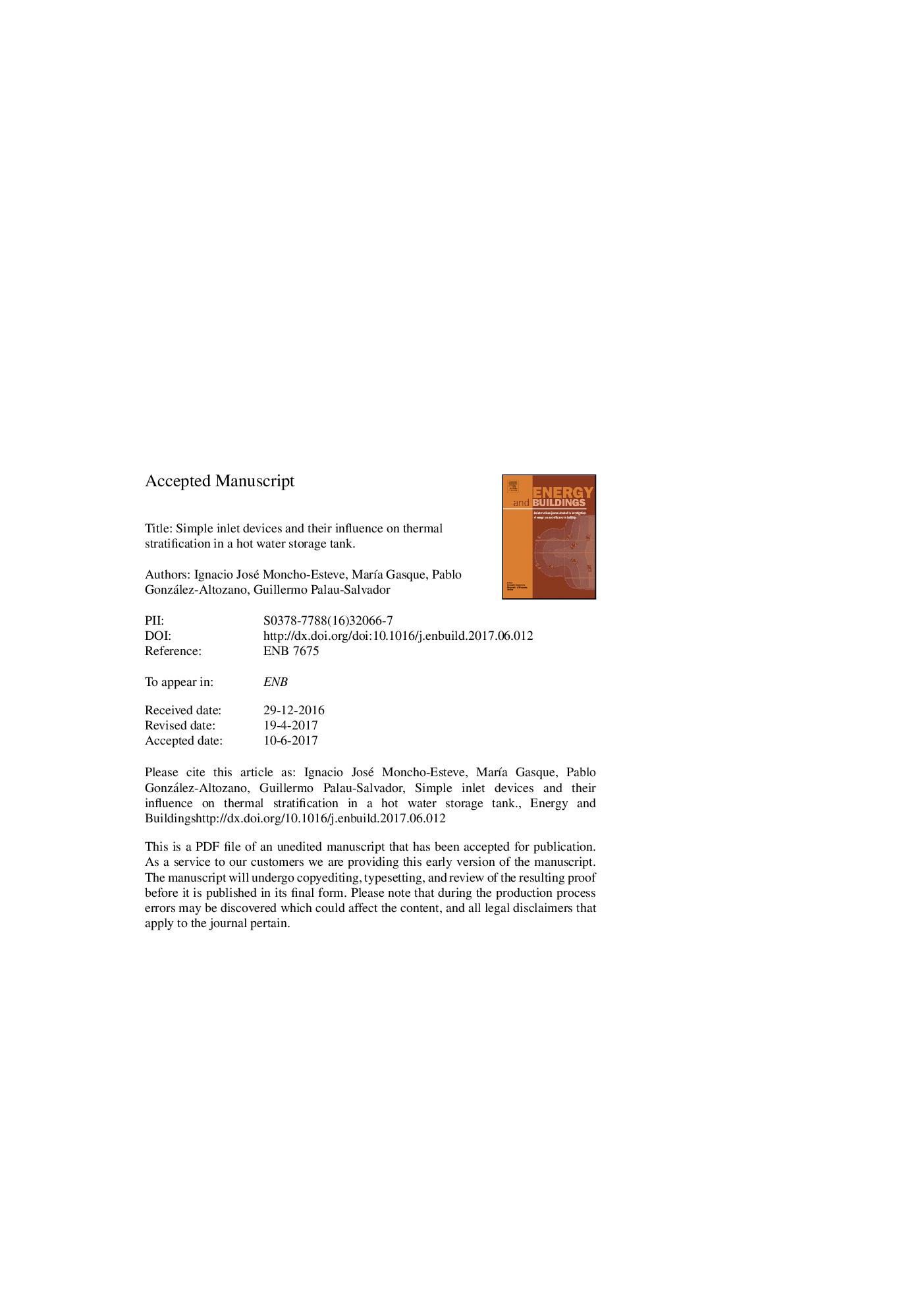| Article ID | Journal | Published Year | Pages | File Type |
|---|---|---|---|---|
| 4914148 | Energy and Buildings | 2017 | 33 Pages |
Abstract
Thermal energy storage is a technology used mostly in buildings and industries in order to preserve thermal energy so that the stored energy can be used at a later time. Thermal stratification during the charge process in a cylindrical water tank was investigated using tools of Computational Fluid Dynamics (CFD). Simulations were validated by means of experimental measurements of time-dependent temperature profiles. The results showed that the model was able to adequately capture the experimental temperature evolution in the tank for all the validation cases. Once validated the model, simple modifications of the usual inlet devices and inflow rate by CFD techniques were accomplished with the intention of improving the tank performance. It was found that the modifications of the simulated inlet devices affected the stratification level. This could lead to improve designs and optimize system efficiency. The analyses confirmed numerically the results obtained experimentally, and it was evidenced that a sintered bronze conical diffuser can improve stratification compared to a conventional bronze elbow inlet. Therefore, CFD techniques proved to be quite a valuable complement of experimental studies. The use of low inflow, smooth out inlet velocity and operate inflow upwards near the top of the tank enhanced stratification.
Keywords
cell areaTotal enthalpyWater stratificationCharge timeURANSLESGCIT (K)TESElbowTotal energyrelative errormean squared errorTemperatureAmbient temperatureInlet temperatureCFDComputational fluid dynamicsThermal energy storageThermal conductivityroot mean squared errorTimeResidence timeDimensionless timeGrid Convergence IndexLarge Eddy SimulationSpecific heat capacityHot water storage tankInflowDynamic viscosityDensity
Related Topics
Physical Sciences and Engineering
Energy
Renewable Energy, Sustainability and the Environment
Authors
Ignacio José Moncho-Esteve, MarÃa Gasque, Pablo González-Altozano, Guillermo Palau-Salvador,
